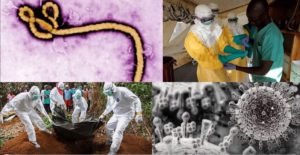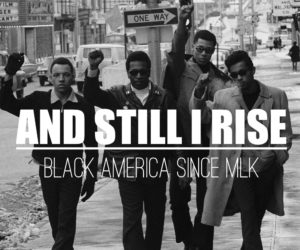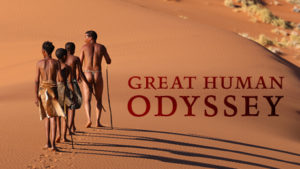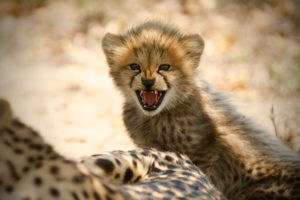We have praised the DVDs releases from PBS Distribution, Lionsgate and Public Media Distribution for years, and this time we offer a wide selection of some of their best releases from 2016 that make super gift choices. Educate and entertain yourself with specials, documentaries and specials that r\demand a place in your library and a place close to the “play again” button! In no particular order we offer. . .
Spillover-Zika, Ebola & Beyond takes us around the globe, where viruses are on the march: Zika, Ebola, Nipah, Chikungunya, Dengue and West Nile. All of these viruses reside in animals and have the potential to “spillover” and infect humans. What’s behind the rise in spillover viruses? Are the United States and the world prepared to anticipate, contain and prevent the next outbreak? The program traces the spread of viruses and reveals strategies to prevent devastating outbreaks. The program features scientists across Africa, Asia, North America and South America who are searching for ways to combat these dangerous diseases.
The program mixes stunning graphics and compelling personal stories to provide much-needed scientific context for the current Zika crisis, the devastating Ebola pandemic and recent Nipah outbreaks. Viewers encounter the new frontiers of disease detection, prevention and containment as they travel the world with virus hunters, whose mission is to identify, track and ultimately control dangerous pathogens. Interspersed throughout the documentary are in-depth interviews with a range of leading researchers, epidemiologists, doctors and public healthcare experts, who shed light on how human behaviors increase spillover events, how science is learning to anticipate and tame spillover events and how the global community must pull together to face the public health threat.
Public Media Distribution’s Black America Since MLK: And I Still Rise, the series hosted, executive produced and written by Harvard professor Henry Louis Gates, Jr. In the program Gates looks at the last 50 years of African American history—from Dr. King to Barack Obama, from James Brown’s “I’m Black and I’m Proud” to Beyoncé’s “Formation”—charting the remarkable progress black people have made and raising hard questions about the obstacles that remain. The series begins at a point in history when the story we tell about ourselves as Americans becomes complicated. Almost every schoolchild today learns about the civil rights movement—about how our nation moved itself forward, against the will of many, out of a shameful past. Yet what has happened since? From here, the series steps out of the sanctified past and into the complex, raw, conflicted present. Today, Barack Obama sits in the White House and African Americans wield influence in every domain, from business to academia to the arts.

At the same time, black people are incarcerated at six times the rate of white people, and due to financial inequality white people now have 13 times the wealth of black people. Many of our schools and neighborhoods are more segregated than they were in 1965, and police killings of unarmed black men in places like Ferguson, Baltimore and Baton Rouge recur with tragic frequency—inspiring radically different responses within black and white communities. How did we end up here, when half a century ago racial equality seemed imminent—even inevitable?
The program begins in 1965, in the wake of Malcolm X’s assassination and the passage of the Voting Rights Act, which was followed five days later by an incendiary explosion of black rage: the Watts riots. It moves on to explore the burgeoning Black Power movement which took much of America (including many old-school black leaders) by surprise, telling stories of Stokely Carmichael, the Black Panthers and cultural icons like James Brown alongside an exploration of the cultural trends that expressed black pride—from Afros and dashikis to Soul Train. The series continues, charting a wave of new opportunities and new consciousness that would lift African Americans to undreamed-of heights—in Ivy League schools, major corporations, the Supreme Court and even the White House.
Cook’s Country Explores: All-American Recipes: Season 9 features the best regional home cooking in the country and relies on a practical, no-nonsense food approach where family-friendly recipes are scientifically re-imagined for the modern home cook. Join the experts from America’s Test Kitchen as they uncover blue-ribbon regional specialties from across the country, and classic fare in need of a makeover. And as always, find out which cookware, kitchen tools, and supermarket foods are worth the dough, and learn more about the history of American food. Cook’s Country: Season 9 also includes tips and techniques, food tastings, equipment tests and printable versions of all 31 recipes.
Our ancient human ancestors once lived as tiny bands of hunter-gatherers scattered across the vast continent of Africa. Numbering no more than a few thousand, small groups of these intrepid humans began to move out of Africa—eventually reaching every corner of the earth. How did these early humans overcome the world’s most difficult terrain and ultimately dominate the planet? How did our prehistoric forebears acquire the skills, technology and talent to thrive in every environment on earth? How did they cross the furnace of the Sahara survive frigid ice ages or manage to sail to the remotest Pacific islands? The program takes viewers on a spectacular global journey through the past, following our ancestors’ footsteps out of Africa along a trail of fresh scientific clues to help unravel the mystery of how we got where we are. Profound answers are to be found NOVA: GREAT HUMAN ODYSSEY.
 Our species has the unique ability to live almost anywhere, in any climate and any terrain. NOVA crisscrosses the world to examine why and how Homo sapiens has spread everywhere—from the far corners of Africa to the Siberian Arctic to the Pacific Islands and the Americas and beyond. The program features interviews with leading historians, anthropologists, archaeologists and geneticists, opening a door to a world of fascinating new discoveries about the origins of us. With unique glimpses of today’s Kalahari hunters, Siberian reindeer herders and Polynesian navigators, NOVA unveils the amazing skills in these traditional hunter-gatherer communities that hint at how our ancestors may have survived and prospered long ago.
Our species has the unique ability to live almost anywhere, in any climate and any terrain. NOVA crisscrosses the world to examine why and how Homo sapiens has spread everywhere—from the far corners of Africa to the Siberian Arctic to the Pacific Islands and the Americas and beyond. The program features interviews with leading historians, anthropologists, archaeologists and geneticists, opening a door to a world of fascinating new discoveries about the origins of us. With unique glimpses of today’s Kalahari hunters, Siberian reindeer herders and Polynesian navigators, NOVA unveils the amazing skills in these traditional hunter-gatherer communities that hint at how our ancestors may have survived and prospered long ago.
Throughout the program, NOVA follows anthropologist Dr. Niobe Thompson as he travels the globe, searching for echoes of the past in the skills of people living in remote and demanding environments—conditions that may be similar to the ones our ancestors had to surmount on their global journey. For decades, anthropologists have been observing such societies trying to understand their social, cultural and spiritual beliefs, and how they live their day-to-day lives—from the food they eat to the natural medicines they use.
Charlie Hebdo. Paris. Brussels. Since January of 2015, a wave of attacks by terrorists linked to Al Qaeda and ISIS has overwhelmed Europe, killing nearly 200 people and injuring hundreds more. Could those attacks have been prevented? And why does Europe remain so vulnerable to the terrorism threat? The program tells the inside story of the missteps and systemic breakdowns that allowed known terrorists to strike in the heart of Europe, the problems that persist today, and the unprecedented threat the continent now faces.
http://https://youtu.be/85KXpjnow6A
In unusually candid interviews, counter-terrorsim veterans tell ProPublica senior reporter Sebastian Rotella how the attackers escaped detection, and how European countries have failed to put in place effective intelligence sharing and border enforcement — such as procedures for tracking air travelers that became standard in the United States after the 9/11 attacks.
The program reveals stunning details of many missed chances in the run-up to the attacks. It tells the story of how previously convicted terrorists who attacked Charlie Hebdo were able to hatch the plot with al Qaeda in Yemen—and of the decision to end surveillance on them. It details how more than a dozen Paris and Brussels attackers shuttled across Europe and back and forth to Syria, crossing borders and fending off police repeatedly—even though most of them were wanted or on watch lists.
Neither pestilence, starvation, nor betrayal can stop Ross Poldark from fighting for justice in his native Cornwall. Aidan Turner returns as the ex-officer, class warrior, lover and mining entrepreneur, called by The New York Times “the noblest, hottest, most down-to-earth hero.”
Also back is co-star Eleanor Tomlinson, playing Demelza, the miner’s daughter who is Ross’ equal in passion, wit, and daring—which is, of course, why they marry. Catch up with the adventures in Poldark Season 2.
New this season—or thrust into prominence from last—are Gabriella Wilde as Caroline Penvenen, a flirtatious young heiress under the watchful eye of her rich uncle, Ray, played by John Nettles; Luke Norrisas earnest young doctor Dwight Enys, who only has time for his patients nd for Caroline; and Henry Garrett as Captain McNeil, Ross’ old comrade from the war, now hunting smugglers and an opportunity to woo a certain married lady.
http://https://youtu.be/vvb_hEn57-M
Viewers of the first season will recall that Ross shocks his relatives and neighbors when he shows up from America, since all had presumed him dead. Then he sets about upending their lives—threatening the copper mining interests of his uncle and cousin, Charles and Francis Poldark, and the rival operation of upstart George Warleggan. He is also ensnared in a romantic web that connects him, Francis, and George to the beautiful Elizabeth. Nevertheless, Ross happily marries Demelza and they have a daughter. But in the final episode of Season 1, an epidemic takes the child away, and a shipwreck and drowning are blamed on Ross.
So at the start of Poldark Season 2, Ross stands accused of murder and “wrecking”—luring a cargo ship to the rocks for plunder. It’s a capital offense, the judge is unsympathetic, hostile witnesses have been bribed and Ross appears headed for the gallows. It’s just the first in a string of suspenseful episodes every bit as precipitous as the steep cliffs of Cornwall.
Cats are one of the most diverse and studied mammals in the world, yet only now is their real identity being understood. Evolutionary tricks and adaptations have contributed to their successful survival. In fact, all 37 species of the cat family behave similarly in the way they hunt, utilizing flexible spines and sharp teeth to catch their prey. No surprise, then, that they are one of the greatest predators since the dinosaurs and are still evolving.
NATURE: The Story of Cats chronicles the 11 million year history of how the most widespread carnivore on the planet evolved, from their roots in ancient rainforests to today’s popular house cat. The latest discoveries by scientists studying their physiology and behaviors are also incorporated into the series.
The first episode, Asia to Africa, shows how the first cats arose in the rainforests of Southeast Asia and moved throughout the continent adjusting to other environments such as high altitudes (snow leopard, Pallas’s cat) and frozen forests (Siberian tigers). The film introduces the most ancient type of cat existing today, the rare clouded leopard, whose genetic blueprint is shared by all cats. Learning how to become ambush predators through play is one of the crucial traits that all young members of the cat family must develop in order to survive in the wild. Cubs of species like the clouded leopard don’t have much time to master these skills before their mother forces them out to find their own territories as solitary predators. It is one of the reasons that around nine million years ago, the ancient tree climbing felines began to fan out all over Asia.
The program explains that a drop in sea level about eight million years ago made Africa accessible via the Red Sea land bridges to the adaptable cats. On the African plains, a keen sense of hearing and an ability to jump high were often necessary attributes for these solo hunters to catch prey. The lion however is the only cat who transitioned from being solitary to living in prides with shared responsibilities and defined roles. Experts theorize that early lions figured out they could hold the best hunting grounds if they worked together. The second episode, Into the Americas, traces how the first cats crossed the Bering Strait land bridge from Asia into North America around nine million years ago, competing for food and territory with the early canida ancestors of wolves and foxes.
But the origins of the most successful cat of all, the domestic house cat, lay in the wildcat’s ability to catch mice attracted by grain stored in villages. They made their way from the Mideast to Europe to America serving the same mouser role on trading ships. The program states that a genetic mutation created the first distinct feline breed, the Siamese cat, in Southeast Asia. People then bred domestic cats for the features they wanted, resulting in more than 40 different types of felines. But although cats are still wild at heart, they may evolve yet again if owners want to reduce the time their pets spend hunting.
